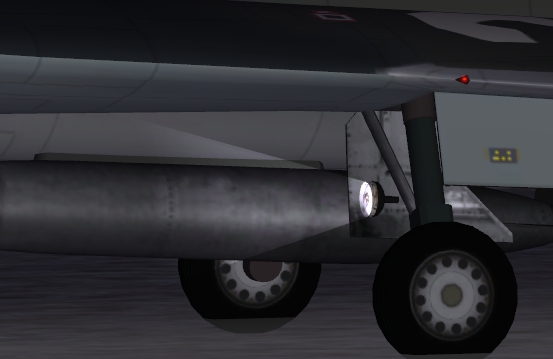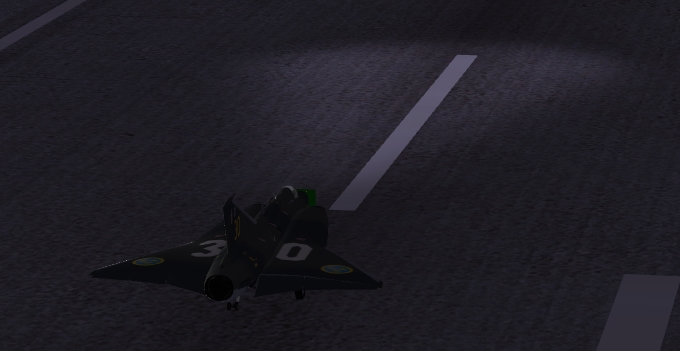These are the major unsolved problems I am working on right now. They are related to both the final update of the FSX version (4.1) and to the planned P3D version (5.0).
Multiplayer
There are a number of problems with Draken in multiplayer, one of them being that animations and fx are not working from the other player’s POV. The reason behind this is that Draken contains custom animations and functions that are compiled into the model. These will not carry over into MP, you only get the animations that are also present in the model you are flying. So other players flying Draken will see the custom animations, but not players in other types of aircraft. The only way around this is to rewire the custom animations to stock animations. I am working on this but it will take some time.
Another problem is that smaller parts of the model disappear as you move away, regardless of which LOD is currently active. This is due to the somewhat erratic LOD handling in MP, where the SmallPartRejectRadius entry in fsx.cfg takes precedence over the LOD:s. There are numerous posts on the Internet saying that this is deprecated since SP2, but this is not true. If the entry is missing from fsx.cfg in SP2/Acc, the parameter will default to 1.0 (pixels) according to the SDK – although in reality it seems to be more like 2.0. Setting the value to zero will render “everything” but you will also take a minor/major performance hit depending on your hardware, number of players, etc. My advice is to try values between 0.0 and 2.0 and find a good balance for your MP environment.
Afterburner
In Draken the afterburner is activated manually with a key command, but shut off automatically as soon as you move the throttle back. This is achieved by setting the afterburner_throttle_threshold entry in aircraft.cfg to >1.0. This unfortunately also means that the throttle setting will automatically go to the threshold value as you hit the A/B key, which in this case means full throttle.
I discovered that the reason for this is that afterburner_throttle_threshold is not simply a threshold value for triggering afterburners, it’s actually a scalar for the throttle tables in the airfile – but only when afterburners_available is set to a value greater than zero. For example, a value of 0.8 means that you will get maximum fuel flow (and N2) at 80% throttle position. Now a single-stage afterburner (afterburners_available = 1) will ignite at 99% throttle, regardless of the threshold value. With multiple-stage afterburners, the activation threshold is lower. I have not yet figured out exacly why and how these factors work together. But the gist of this is that you cannot separate afterburner from throttle position in FSX. In the real Draken you could adjust the throttle while on afterburner, which could be crucial in formation flying. In FSX this is not possible. With afterburner on, you are stuck with the threshold value. It took me years (!) to discover that this is a limitation in FSX itself.
Another problem is that in multiplayer, other players will not see your afterburner fx since they are tied to a custom function compiled into the model (see above). I therefore tried to rewrite the A/B logic using only the stock functions and animations. This turned out to be a major headache for me, as the criteria for A/B actuation are quite complex in Draken compared to (for instance) the stock F/A-18. I am still working on this but I doubt that I will ever get it completely right…
Radio frequency settings, etc.
People are often complaining (politely) about the fact that the radios in Draken are tied to local variables, which apparently poses a problem when using ATC or when flying in a VA environment such as VATSIM. Now, the radios were among the first gauges I developed for Draken, more than a decade ago, and they were designed for the single-player flying that I was doing at the time. I have since done some changes and simplified the radios so that they respond to FSX key commands, but there is still some work to do. My goal is to have most of the radio and avionics settings using standard variables. Working on this, too.
So, a lot to do, as always. ;)
Stay tuned /Tom



